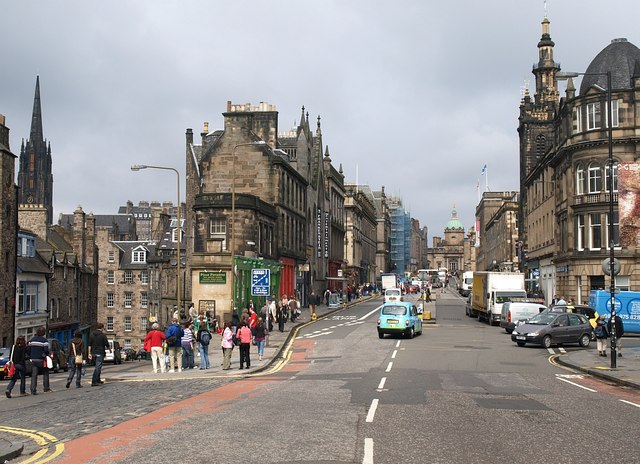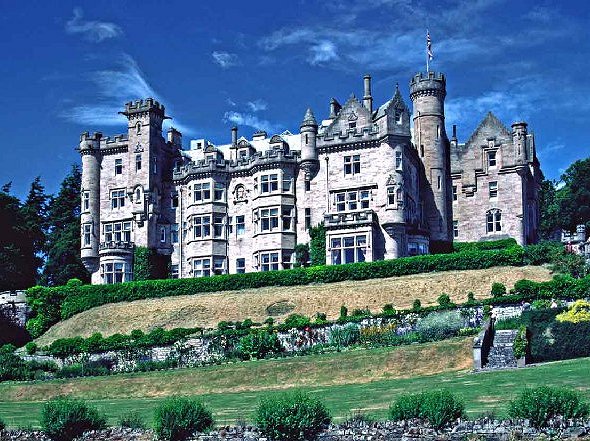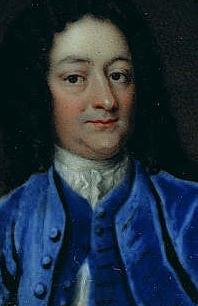|
Sir Harry Munro, 7th Baronet
Sir Harry Munro, 7th Baronet (c. 1720 – 12 June 1781) was 25th Baron and the 28th chief of the Clan Munro. He was a Scottish soldier and politician. He was loyal to the Hanoverian dynasty and served as a captain in Loudon's Highlanders Regiment 1745–48. Early life Harry Munro was the second surviving son of Sir Robert Munro, 6th Baronet and Mary, daughter of Henry Seymour of Woodlands. His elder brother Robert having died in infancy. His uncle was George Munro, 1st of Culcairn. Early military career Sir Harry's military career seems to have started when he was among nine young gentlemen appointed Ensigns in Bisset's Regiment later the 30th Regiment of Foot in May 1742. In June 1745 he was appointed on the recommendation of Lord Stair and Henry Pelham as one of the company commanders in a new Highland Regiment being raised by John Campbell, 4th Earl of Loudoun. Jacobite rising of 1745 - 1746 Harry Munro's company was one of three in the process of being raised in the No ... [...More Info...] [...Related Items...] OR: [Wikipedia] [Google] [Baidu] |
Loudon's Highlanders
Loudon's Highlanders, or the 64th Highlanders, or Earl of Loudon's Regiment of Foot, was an infantry regiment of the British Army. History Formation The great bravery of the 43rd Highlanders (later renumbered the 42nd) and the admirable service which they rendered at the Battle of Fontenoy in May 1745, made the Government anxious to avail themselves still further of the military qualities of the Highlanders. Authority, therefore, was given to John Campbell, 4th Earl of Loudoun to raise another Highland regiment under the patronage of the noblemen, chiefs, and gentlemen of that part of the kingdom, whose sons and connections would be appointed officers. The regiment was raised at Inverness and Perth in August 1745 and the Earl of Loudoun served as its colonel throughout its short life. By 8 June 1745, the regiment numbered 1,250 men who were formed into twelve companies. By August 1745, the regiment consisted of twenty companies of men. Loudon's regiment was an entirely different ... [...More Info...] [...Related Items...] OR: [Wikipedia] [Google] [Baidu] |
Nairn
Nairn (; gd, Inbhir Narann) is a town and royal burgh in the Highland council area of Scotland. It is an ancient fishing port and market town around east of Inverness, at the point where the River Nairn enters the Moray Firth. It is the traditional county town of Nairnshire. At the 2011 census, Nairn had a population of 9,773, making it the third-largest settlement in the Highland council area, behind Inverness and Fort William. Nairn is best known as a seaside resort, with two golf courses, award-winning beaches, a community centre and arts venue, a small theatre (called The Little Theatre) and one small museum, providing information on the local area and incorporating the collection of the former Fishertown museum. History The History of Nairn is a broad and diverse topic spanning its Palaeolithic and Mesolithic roots before recorded history, to the Picts and the visitation of Roman general Agriocola. Its possible founding under the name Ekkailsbakki by Sigurd, Earl ... [...More Info...] [...Related Items...] OR: [Wikipedia] [Google] [Baidu] |
George IV Bridge
George IV Bridge is an elevated street in Edinburgh, Scotland, and is home to a number of the city's important public buildings. History A bridge connecting the Royal Mile to the south was first suggested as early as 1817, but was first planned further west and was non-linear and complicated. Plans developed through the 1820s, concluding in 1825 that a linear form aligned with Bank Street (which then connects to The Mound and Princes Street was more logical, even though this required more destruction of existing buildings. This would bridge over the Cowgate and Merchant Street. Measuring in length, the bridge was constructed between 1827 and 1836 as part of the Edinburgh Improvement Act of 1827. Named after King George IV, it was designed by architect Thomas Hamilton (1784–1858) to connect the South Side district of Edinburgh to the Old Town (Royal Mile) and then use exiting streets on the north to connect to the New Town. Two of Edinburgh Old Town's traditional street ... [...More Info...] [...Related Items...] OR: [Wikipedia] [Google] [Baidu] |
Charles Edward Stuart
Charles Edward Louis John Sylvester Maria Casimir Stuart (20 December 1720 – 30 January 1788) was the elder son of James Francis Edward Stuart, grandson of James II and VII, and the Stuart claimant to the thrones of England, Scotland and Ireland from 1766 as Charles III. During his lifetime, he was also known as "the Young Pretender" and "the Young Chevalier"; in popular memory, he is known as Bonnie Prince Charlie. Born in Rome to the exiled Stuart court, he spent much of his early and later life in Italy. In 1744, he travelled to France to take part in a planned invasion to restore the Stuart monarchy under his father. When the French fleet was partly wrecked by storms, Charles resolved to proceed to Scotland following discussion with leading Jacobites. This resulted in Charles landing by ship on the west coast of Scotland, leading to the Jacobite rising of 1745. The Jacobite forces under Charles initially achieved several victories in the field, including the Battle ... [...More Info...] [...Related Items...] OR: [Wikipedia] [Google] [Baidu] |
George Mackay, 3rd Lord Reay
George Mackay, 3rd Lord Reay (1678–1748), was a Scottish noble and chief of the Clan Mackay, a Scottish clan of the Scottish Highlands. During his life the Glorious Revolution took place which directly affected his family and estate, and during his chiefdom he served the British-Hanoverian Government during the Jacobite rising of 1715 and the Jacobite rising of 1745. Early life George Mackay, 3rd Lord Reay, was the only son of Donald Mackay, Master of Reay, and his wife Ann, daughter of Sir George Munro of Culrain (of Newmore).Mackay. pp. 161–162. The Master of Reay was killed in an accident in 1680 when a barrel of gunpowder exploded whilst hunting in the Reay Forest, and his father, John Mackay, 2nd Lord Reay, died not long after. George Mackay, 3rd Lord Reay, therefore succeeded his grandfather, the 2nd Lord Reay.Mackay. p. 163. The Glorious Revolution The period of 1680–1688 was of growing religious persecution in Scotland with the House of Stuart steering for politi ... [...More Info...] [...Related Items...] OR: [Wikipedia] [Google] [Baidu] |
George Mackay Of Skibo
George Mackay of Skibo (''c.'' 1715 – 25 June 1782) was a Scottish lawyer, soldier and politician. He fought for the British Government during the Jacobite rising of 1745 and was later a Member of Parliament.Mackay. Page 193. Early life Mackay was a younger son of George Mackay, 3rd Lord Reay and his third wife Mary Dowell. He was educated at the University of Aberdeen and became an advocate in 1737. Jacobite rising of 1745 The Clan Mackay supported the British Government during the Jacobite rising of 1745. George Mackay was Captain of the 1st Mackay Independent Highland Company that was raised by Duncan Forbes, Lord Culloden to oppose the Jacobites. George Mackay took an active part in the Skirmish of Tongue in March 1746 when money and supplies that were destined for the Jacobites were captured from a French ship. He also led his independent company in the Raids on Lochaber and Shiramore. This led to a commission in the regular British Army, from which he retired in ... [...More Info...] [...Related Items...] OR: [Wikipedia] [Google] [Baidu] |
Prince William, Duke Of Cumberland
Prince William Augustus, Duke of Cumberland (15 April 1721 Old_Style_and_New_Style_dates">N.S..html" ;"title="Old_Style_and_New_Style_dates.html" ;"title="/nowiki> N.S.">Old_Style_and_New_Style_dates.html"_;"title="/nowiki>Old_Style_and_New_Style_dates">N.S./nowiki>_–_31_October_1765)_was_the_third_and_youngest_son_of_George_II_of_Great_Britain.html" ;"title="Old Style and New Style dates">N.S.">Old_Style_and_New_Style_dates.html" ;"title="/nowiki>N.S./nowiki>_–_31_October_1765)_was_the_third_and_youngest_son_of_George_II_of_Great_Britain">King_George_II_of_N.S./nowiki>_–_31_October_1765)_was_the_third_and_youngest_son_of_George_II_of_Great_Britain">King_George_II_of_Kingdom_of_Great_Britain">Great_Britain_and_Kingdom_of_Ireland.html" "title="Kingdom_of_Great_Britain.html" "title="Old Style and New Style dates">N.S./nowiki> – 31 October 1765) was the third and youngest son of George II of Great Britain">King George II of Kingdom of Great Britain">Great Britain and King ... [...More Info...] [...Related Items...] OR: [Wikipedia] [Google] [Baidu] |
Battle Of Dornoch
The Battle of Dornoch took place on 20 March 1746 and was part of the Jacobite rising of 1745 in Scotland. However, although recorded in history as a "battle"MacLeod. p. 333. there was no actual fighting between the two sides. Instead a large rebel Jacobite force advanced on a position held by a force loyal to the British-Hanoverian Government who were taken by surprise and forced into a retreat. The Jacobite advance was coordinated by James Drummond, 3rd Duke of Perth at Dornoch, Sutherland.Pollard. p. 32. Background Lord Loudoun (John Campbell, 4th Earl of Loudoun), supporter of the British-Hanoverian Government who was at Dornoch concluded that the Jacobites would attack from across the River Shin (which was West of his position) and that his eastern flank remained secured by the Royal Navy. This was despite warning to the contrary. He decided that the next morning he would ride up to a place called Invershin and he left Dornoch on 20 March between 7 and 8am. Rebel advance ... [...More Info...] [...Related Items...] OR: [Wikipedia] [Google] [Baidu] |
Ross-shire
Ross-shire (; gd, Siorrachd Rois) is a historic county in the Scottish Highlands. The county borders Sutherland to the north and Inverness-shire to the south, as well as having a complex border with Cromartyshire – a county consisting of numerous enclaves or exclaves scattered throughout Ross-shire's territory. Ross-shire includes most of Ross along with Lewis in the Outer Hebrides. Dingwall is the traditional county town. The area of Ross-shire is based on that of the historic province of Ross, but with the exclusion of the many enclaves that form Cromartyshire. For shreival purposes the area was first separated from the authority of the sheriff of Inverness by Act of Parliament during the reign of King James IV, the sheriff to sit at Tain or Dingwall. Sheriffs were seldom appointed, and further acts of 1649 and 1661 restated its separation from Inverness. The 1661 act also clarified the area encompassed, based on the pre-Reformation Diocese of Ross. Sir Geor ... [...More Info...] [...Related Items...] OR: [Wikipedia] [Google] [Baidu] |
Black Isle
The Black Isle ( gd, an t-Eilean Dubh, ) is a peninsula within Ross and Cromarty, in the Scottish Highlands. It includes the towns of Cromarty and Fortrose, and the villages of Culbokie, Jemimaville, Rosemarkie, Avoch, Munlochy, Tore, and North Kessock, as well as numerous smaller settlements. About 12,000 people live on the Black Isle, depending on the definition. The northern slopes of the Black Isle offer fine views of Dingwall, Ben Wyvis, Fyrish and the deepwater anchorage at Invergordon. To the south, Inverness and the Monadhliath Mountains can be seen. Description Despite its name, the Black Isle is not an island but a peninsula, surrounded on three sides by the sea – the Cromarty Firth to the north, the Beauly Firth to the south, and the Moray Firth to the east. On the fourth, western side, its boundary is broadly delineated by rivers. The River Conon, which divides Maryburgh from Conon Bridge, defines the border in the north-west. The south-weste ... [...More Info...] [...Related Items...] OR: [Wikipedia] [Google] [Baidu] |
Battle Of Falkirk (1746)
The Battle of Falkirk Muir ( Scottish Gaelic: ''Blàr na h-Eaglaise Brice''), also known as the Battle of Falkirk, took place on 17 January 1746 during the Jacobite rising of 1745. Although it resulted in a Jacobite victory, their inability to take advantage meant it ultimately had little impact on the campaign. Following their withdrawal from England in December 1745, the Jacobite army besieged Stirling Castle in early January. One of the strongest positions in Scotland, they made little progress and government forces under Henry Hawley advanced north from Edinburgh to relieve it. He reached Falkirk on 15 January but was taken by surprise when the Jacobites attacked late in the afternoon of 17 January. Fought in failing light and heavy snow, Hawley's left wing was routed but his right held firm and for a while both sides believed themselves to have been defeated. As a result of this confusion, the Jacobites failed to follow up their victory, leading to bitter disputes o ... [...More Info...] [...Related Items...] OR: [Wikipedia] [Google] [Baidu] |
Edinburgh
Edinburgh ( ; gd, Dùn Èideann ) is the capital city of Scotland and one of its 32 council areas. Historically part of the county of Midlothian (interchangeably Edinburghshire before 1921), it is located in Lothian on the southern shore of the Firth of Forth. Edinburgh is Scotland's second-most populous city, after Glasgow, and the seventh-most populous city in the United Kingdom. Recognised as the capital of Scotland since at least the 15th century, Edinburgh is the seat of the Scottish Government, the Scottish Parliament and the highest courts in Scotland. The city's Palace of Holyroodhouse is the official residence of the British monarchy in Scotland. The city has long been a centre of education, particularly in the fields of medicine, Scottish law, literature, philosophy, the sciences, and engineering. It is the second-largest financial centre in the United Kingdom, and the city's historical and cultural attractions have made it the UK's second-most visited tourist d ... [...More Info...] [...Related Items...] OR: [Wikipedia] [Google] [Baidu] |







